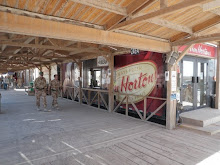EW: The assets other than goodwill can be a significant component in the overall value of a practice. With the pace of changing technology and the move to multi-disciplinary and rehabilitation clinics, both the overall cost related to these assets and the degree of obsolescence are becoming more important to its value.
Before assessing a value for a particular asset, a purchaser should first determine if they will utilize that asset in their practice. An asset they won't use has no value as far as the practice is concerned. This issue is extremely important from the vendor's perspective also. To maximize sale value, the vendor should be searching for purchasers who practice in a similar style and who utilize the same types of equipment.
What is the most appropriate measure for value of a particular asset? To determine fair market value, many approaches can be taken. For a practice that has wound down and has no value beyond the equipment, net realizable value might be used. In some cases, this may result in what one may term a "fire sale" price. For a going concern, on the other hand, replacement cost would be a more appropriate measure. In other words, what would it cost to replace the same equipment? Replacement cost can be difficult to assess. As an example, consider the practitioner who has included, in a sale, his well maintained twenty year old x-ray unit. On the one hand, one cannot find a similar machine depreciated for twenty years. On the other hand, its value may be the same as or greater than a newer unit because of its workmanship and features. Obsolescence also affects valuation for similar reasons. As an example, it may be difficult to find an appropriate replacement cost for an old computer. Remember, value in use is the key.
How does one arrive at an appropriate replacement cost? For inventories and supplies, using their purchase costs would be appropriate because of the turnover of the items within a year. For equipment, computers and furniture, there are a few approaches:
1. Book Value: This is the depreciated value from the financial statements. This approach is often used for its simplicity. On its own, it may be useful where the assets are not of significant value. However, extreme caution should be used. At a minimum, the original invoices for the assets should be available and depreciation policies and rates should be reviewed. Often, accelerated rates may be used for tax purposes. A review of the repairs and maintenance account on the financial statements for the previous years may provide a picture of both the maintenance and the degree to which those assets may be wearing down. Where there are significant modalities and rehabilitation equipment involved, this approach is insufficient because the margin of error becomes greater.
2. Replacement Cost New: An approach which is often recommended is to obtain prices from dealers for the listed equipment. The prices obtained are, in fact, the cost to replace the equipment - new. Certainly, in practical terms, it is a useful measure because it addresses the issue of the same equipment. On its own, however, it tends to overstate the value in most cases.
3. Replacement Cost Used: Although this would approximate fair market value, it is often the most difficult to determine. The lack of a large market for used equipment and furniture is partly the reason. This is not to say that one can=t find used equipment - only that in valuing an existing asset it is difficult to find one that is the exact age or condition. To deal with this issue, it is often useful to obtain an independent appraisal. This is particularly important with assets of significant or potentially significant value. For example, if real estate were part of the transaction, one would not hesitate to request an appraisal of the property.
Leasehold improvements is an asset that has many a practitioner confused. Since the landlord owns the property, don't they ultimately own the improvements? Yes.....and.....no. The landlord may own the assets but the tenant owns the right to use those improvements during the term of the lease. This right to use the improvements has value because a purchaser would have to invest in their own improvements if they were to move into new premises. One method to arrive at a value would be to take the original cost and apportion it over the term of the lease. The remaining cost on the date of sale would be the value. From the purchaser's point of view, they should ensure that amounts were expended for actual leasehold improvements and not the recreation room in the vendor's home. An examination of actual invoices would be useful. Also, the lease should be reviewed to see who was responsible for paying for the leaseholds. Sometimes landlords will offer to pay for leaseholds as an incentive to attract tenants. From the vendor's point of view, aggressive tax planning, whereby leaseholds have been written off as repairs can backfire on a sale. This is one reason why planning for a sale is critical.
Finally, two other issues can impact on the value of these assets: Taxes and a corporation. Sometimes the value attributed to certain assets can give rise to unwanted tax implications, such as recaptured depreciation for the vendor or increased sales taxes for the purchaser. From the purchaser's point of view, the more value attributed to assets other than goodwill will result in greater tax savings over time due to the accelerated rate of depreciation.
The corporation can impact the asset values because of the tax implications of using a corporation. A vendor who sells the assets out of a corporation will have to consider the additional tax cost of removing the proceeds from the corporation. We will address other aspects of the impact of a corporation in a future article.
Ultimately, the approaches used to value the assets specifically will depend on the situation, what types of assets, their significance to the overall sale price and the information available.
Subscribe to:
Post Comments (Atom)












































No comments:
Post a Comment